Not following warning labels can be hazardous to your health and the health of those around you. Products containing hazardous chemicals can cause severe injuries or make you sick. Over exposure to some chemicals can also kill you.
Warning labels are worthless if you don’t read them or understand them. OSHA has adopted a standardized system of labeling to help you identify hazards. Make sure you know what to look for and what the symbols mean.
Note: Hazardous products with these pictograms can be safely worked with if the safety precautions, proper storage, and handling practices are followed.
Recognize the symbols used on labels
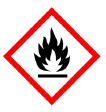
- Common flammable chemicals include:
- Gasoline or diesel fuel
- Solvents
- Thinners and adhesives
- Some can catch fire without air, when heated, or coming into contact with water

- Most common oxidizers – Hydrogen Peroxide. Being a strong oxidizer, reactions with H2O2 tend to produce heat and generate oxygen gas(O2). It is that reason why hydrogen peroxide is closely monitored at concentrations above 32% by the U.S government. Oxygen – Compressed gas in a cylinder in laboratory settings (pure gases or mixtures with an oxidizing power greater than 23.5%).
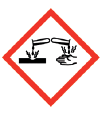
- Many cleaners are corrosive with a high pH 11-13 (Base) or a low pH 1-3 (Acid)
- Chlorine bleach pH 11-13
- Liquids that clean clogged drains, sinks, toilets pH 1-3
- Lime and scale removers (Tub & Tile Cleaners) pH 11-13
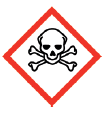
- Commonly used toxic chemicals (if swallowed) include:
- Antifreeze
- Bleach
- Drain Cleaners
- Ammonia (can produce a toxic gas if mixed with other chemicals)
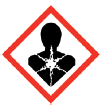
- When you are working with materials displaying the health hazard symbol, follow proper safety procedures and precautions to prevent short-term and long-term damage to your health.
- Asbestos
- Lead
- Welding fumes – Hexavalent Chromium
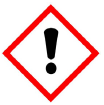
- The solution is harmful, but it will not cause immediate damage upon contact with materials. Products with this symbol require proper ventilation, and usage to prevent injury
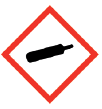
- If the container is damaged, the gas can be released, causing a fire of explosion. The container can act like a missile when it explodes and can injure people in its path.
- If the gas is poisonous it can make you or others nearby sick or it may cause death.
- Check the cylinder labels carefully for other pictograms – Flammable – Oxidizer.
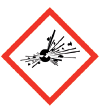
A sample of a Globally Harmonized System (GHS) label can be found below:
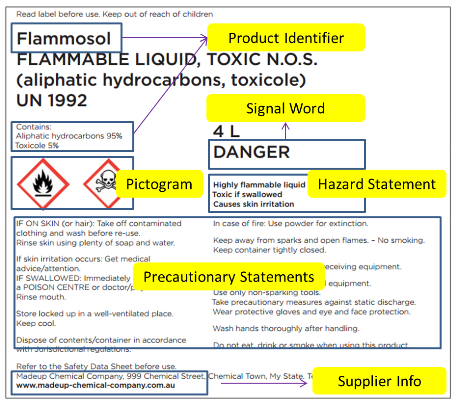
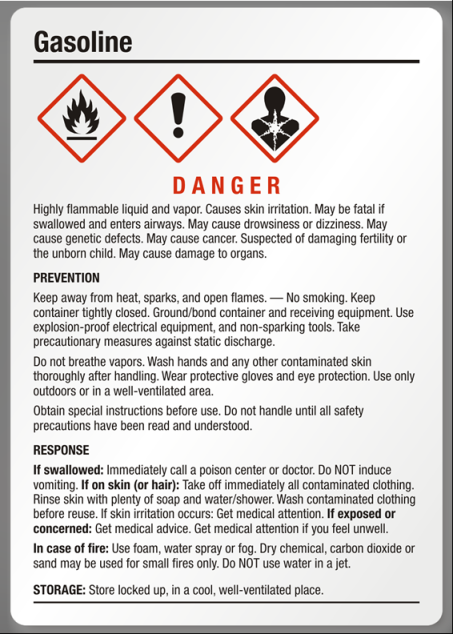
Example of chemical product labels used at Lawrence University.
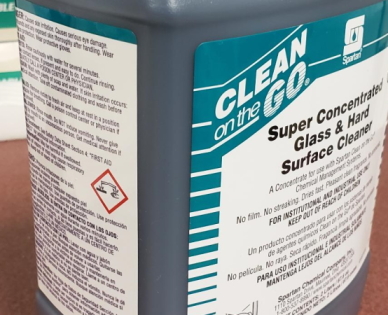
Image of a Super Concentrated Glass & Hard Surface Cleaner labels – side label has corrosion symbol.
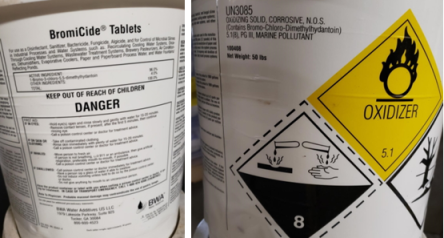
Besides these Hazard Communication Symbols on labels, Safety Data Sheets can provide more detail on the hazards of a product. It will contain hazard statements and precautionary statements you can follow to work safely with the product.
Source: The Center for Construction Research and Training, “Hazard Alert – Hazard Communication A Guide to Symbols”.
